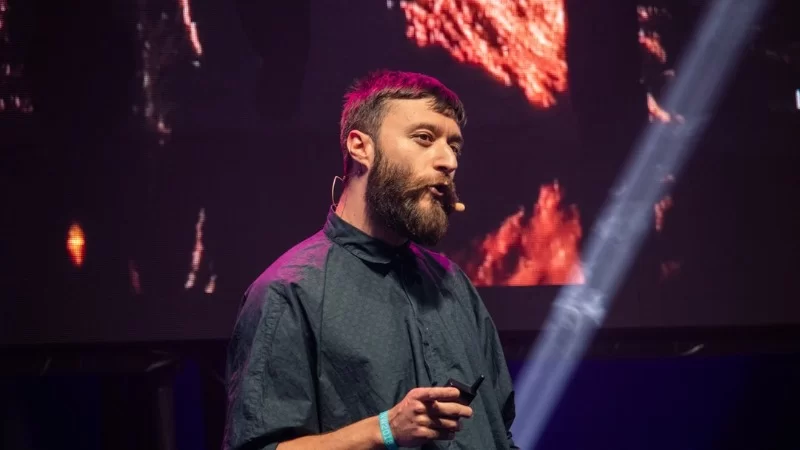#innovationmandate
Words are things – Maya Angelou
There is perhaps nothing I find more surprising than the fact that many leaders are incredibly careless about the way in which they use language, particularly when it comes to innovation and new ideas. In its most simple terms, if we want to inspire others we need to take what’s in our head and deliver it into the heads of our team members. We need to communicate what’s in our head to our team in a way that inspires them to follow our vision willingly. Our ability to communicate our new ideas in a way that engages our teams is possibly the single most important attribute of all winning leaders.
The best way to inspire innovation is to deliver a vision that has both value and attainability, and which will help our listeners see its value. Good speakers do not just deliver content; they also deliver feelings.
Textbook content alone does not inspire. When people want a dry recitation of facts, they go to Wikipedia, or call the help desk. True innovation leadership is all about making the emotional connection; only once that’s been done will people see the value and attainability of your vision.
Two Types of Presentations: Content and Human-Based
Let me give you an example of two very different openings to a keynote presentation on innovation leadership. Our speakers are John and Darryl.
John takes the podium and says,
“Today, ladies and gentlemen, I’m going to share with you a range of new methodologies that include novel approaches that can systematically increase the returns on strategic initiatives by driving new best practices in the area of leadership optimization. I will also leverage new analytic methodologies in order to show leaders how they can leverage data to gain better insights about their teams to significantly improve growth and profit.”
Are you already bored by what John is saying? I’m not surprised. John is delivering nothing more than dry-as-dust content. It had no context. There was no information about why human beings should be interested or excited by it.
In order to get the attention of your stakeholders, you need to engage them on an emotional level. This is because deep down inside, humans are motivated by primal needs. Let’s listen to how another speaker, Darryl, engages his audience.
Darryl takes the podium and says,
“You, my friends, are artists, coaches, innovators, and yes… leaders! In your privileged role as a leader, each of you has the opportunity to change lives and to live a mission that really matters. Today, I’m going to share some moving examples of how some of the best leaders are inspiring, innovating, and adapting to massive change. Most importantly, perhaps, I’m going to share with you four simple principles that will literally transform your leadership skills to superstardom. So let’s get started!”
Darryl’s approach is human-based. As humans we’re not drawn in by dry methodologies. We’re drawn in by our humanness and our emotive self. Yes, content matters; but if it’s not received and internalized it will be of little use.
For example, if you Google “the top TED talks of all time,” you will see humanism, passion, and vision expressed, with no exceptions.
The Top Ten TED Talks
To save you the trouble, I did it myself; and according to TED.com, as of this writing the top ten most popular TED talks are:
• Simon Sinek, “How great leaders inspire action.” He presents a simple but innovative model for inspirational leadership with the question, “Why?”
• Brené Brown, “The power of vulnerability.” It’s all about the human connection and our ability to empathize, belong, and love.
• Cameron Russell, “Looks aren’t everything. Believe me, I’m a model.” Tall, pretty, and an underwear model, she takes an unflinching look at the industry that sells images of seductive teenagers.
• Shawn Achor, “The happy secret to better work.” If you love your mission, your happiness will inspire you to be more productive.
• Celeste Headlee, “Ten ways to have a better conversation.” Radio host Headlee knows the ingredients of a great conversation: Honesty, brevity, clarity, and a healthy amount of listening.
• Robert Waldinger, “What makes a good life? Lessons from the longest study on happiness.” He discusses what keeps us happy and healthy as we go through life.
• Tom Thum, “The orchestra in my mouth.” This innovative human beatbox performer slings beats, comedy, and a mouthful of instrumental impersonations.
• Maz Jobrani, “A Saudi, an Indian and an Iranian walk into a Qatari bar…” This Iranian-American comedian tackles volatile cultural issues with a smile.
• Andrew Solomon, “Depression, the secret we share.” The opposite of depression is not happiness but vitality.
• Carol Dweck, “The power of believing that you can improve.” She discusses “growth mindset”—the idea that we can grow our brain’s capacity to learn and to solve problems.
Remember, innovation is exciting and future-oriented. When you talk about innovation with your people, help them to feel its benefits, both for them personally, the organization, and the community.
